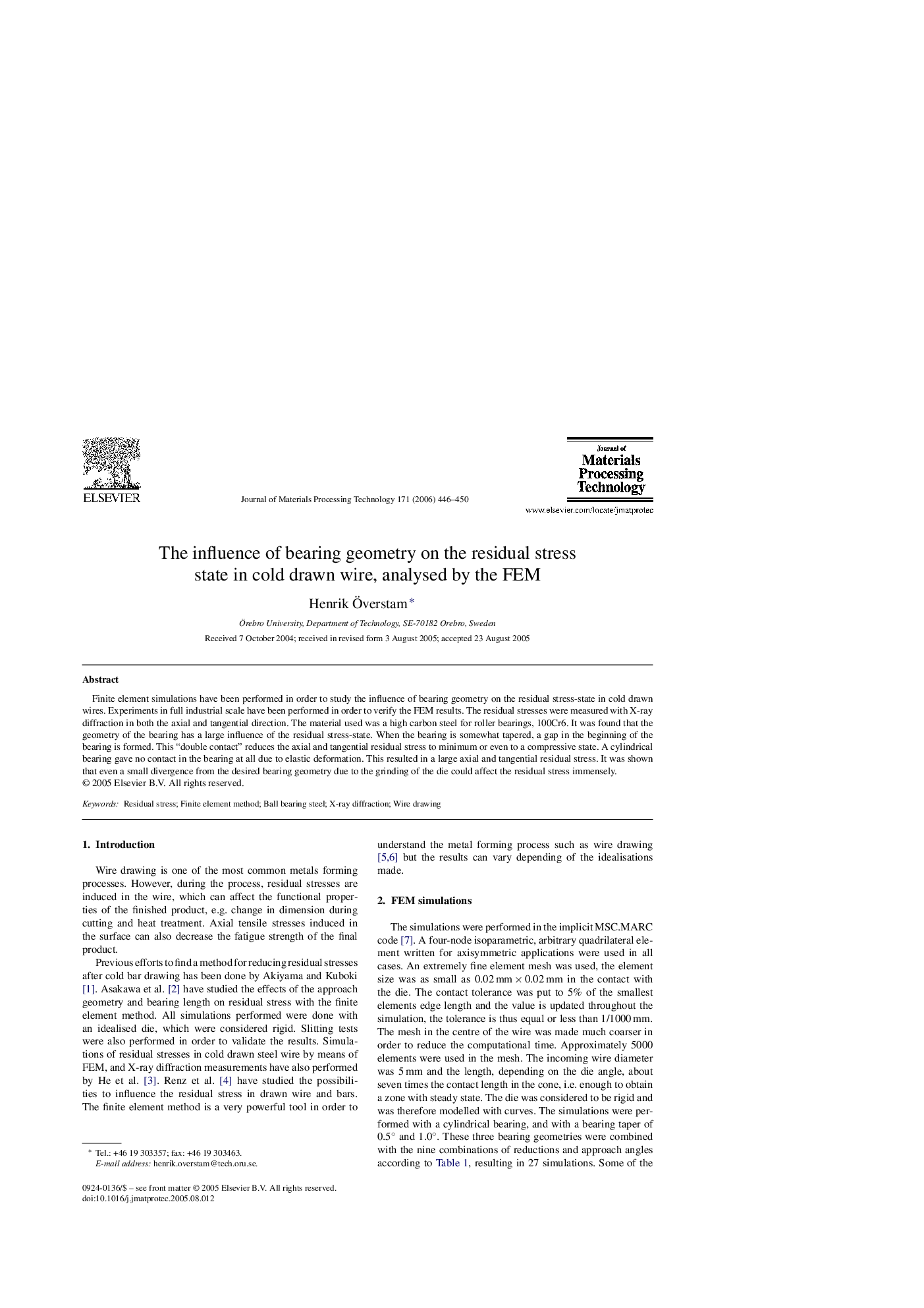| Article ID | Journal | Published Year | Pages | File Type |
|---|---|---|---|---|
| 794614 | Journal of Materials Processing Technology | 2006 | 5 Pages |
Finite element simulations have been performed in order to study the influence of bearing geometry on the residual stress-state in cold drawn wires. Experiments in full industrial scale have been performed in order to verify the FEM results. The residual stresses were measured with X-ray diffraction in both the axial and tangential direction. The material used was a high carbon steel for roller bearings, 100Cr6. It was found that the geometry of the bearing has a large influence of the residual stress-state. When the bearing is somewhat tapered, a gap in the beginning of the bearing is formed. This “double contact” reduces the axial and tangential residual stress to minimum or even to a compressive state. A cylindrical bearing gave no contact in the bearing at all due to elastic deformation. This resulted in a large axial and tangential residual stress. It was shown that even a small divergence from the desired bearing geometry due to the grinding of the die could affect the residual stress immensely.
